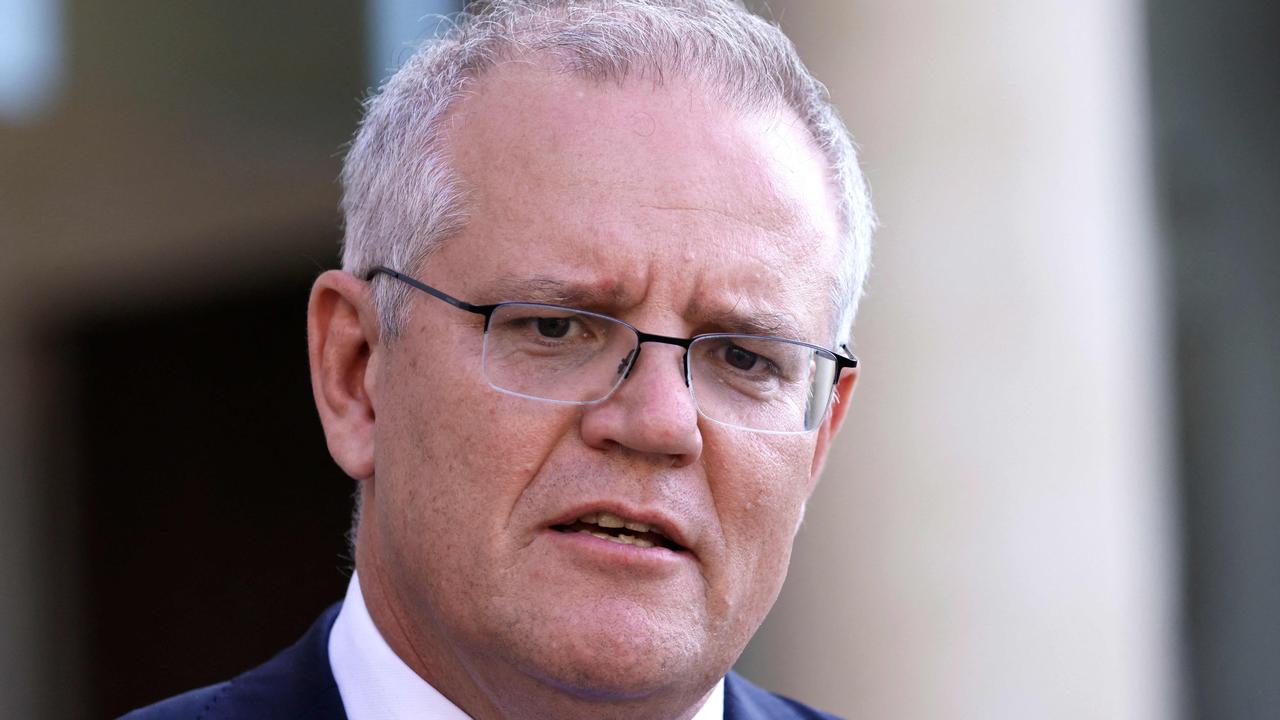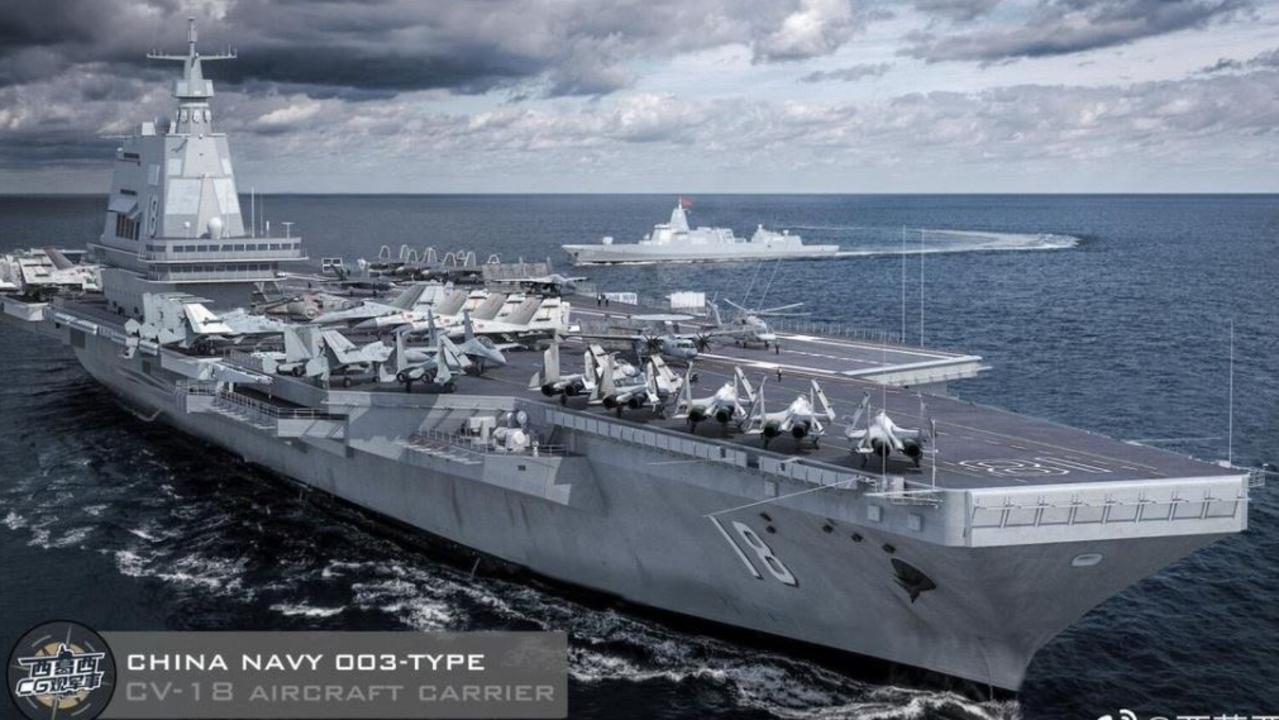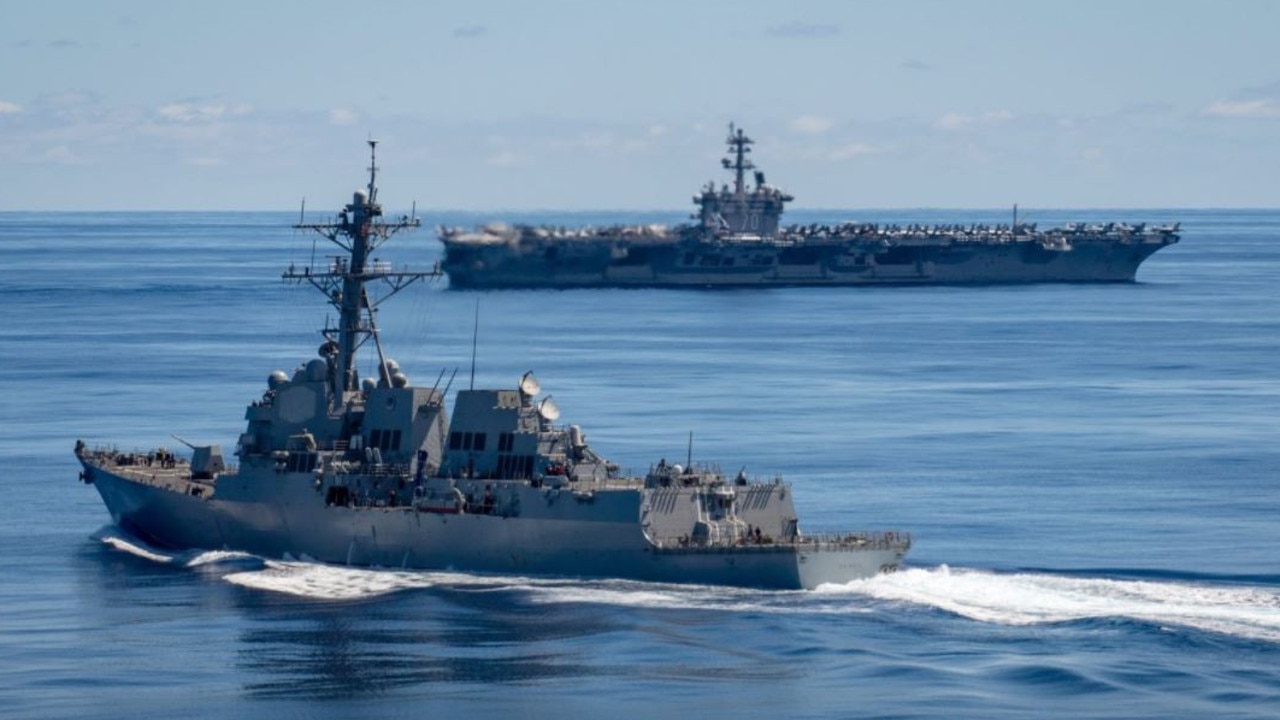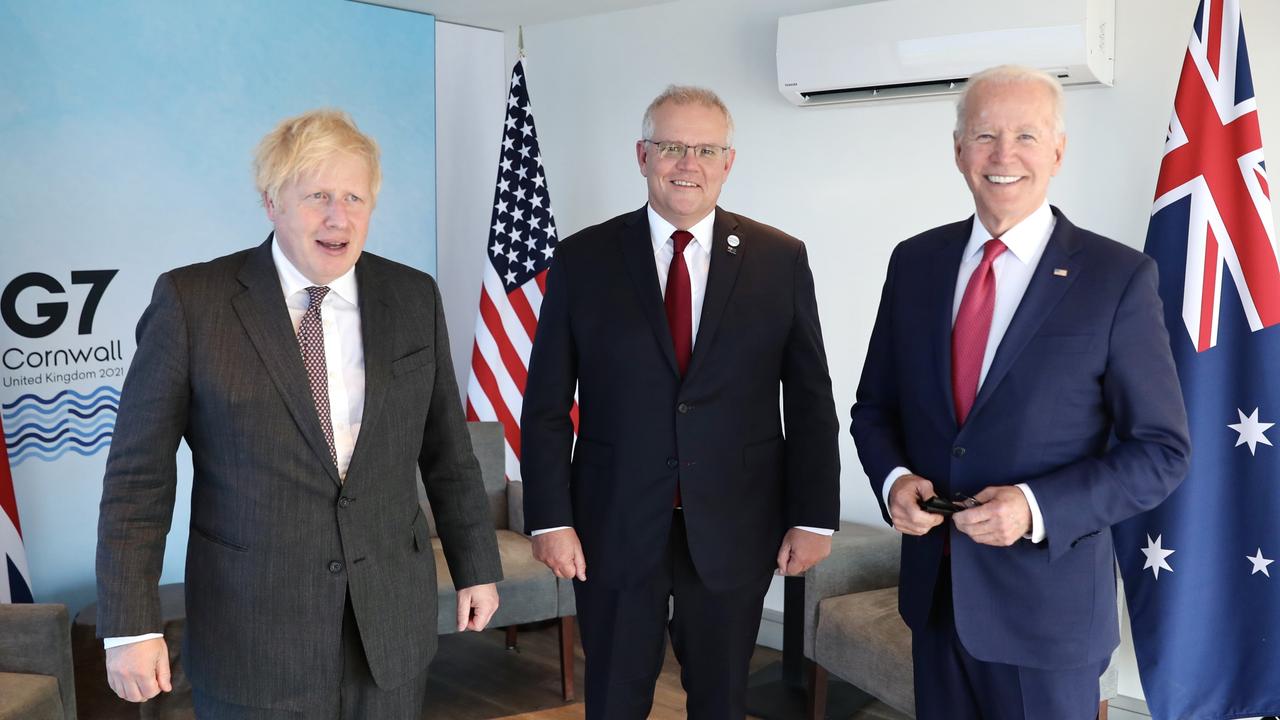Inside US Pacific plan to combat China
Biden’s government says it needs presence in the South China Sea – which Australia will almost certainly be asked to contribute to.
The US says it needs a “combat-credible” presence in the South China Sea to deter Chinese aggression. And Australia will almost certainly be asked to contribute.
US President Joe Biden’s nominee for assistant secretary of defence Ely Ratner told the Senate Armed Services Committee on Wednesday that “a combat-credible forward posture” of forces was needed to “deter, and if necessary, deny a fait accompli scenario”.
He was referring to fears Beijing was resolutely building up its forces to seize neighbouring Taiwan.
His statement came as US media revealed the Pentagon is considering creating a “standing force” – a permanent naval presence – in the Western Pacific. Mr Ratner went on to say such a force would need “new operational concepts, modernised and high-end ready forces, and capable allies and partners proficient in their warfighting roles”.
Prime Minister Scott Morrison appears to be amenable to the idea. At a speech in Paris, he called for an international effort to enforce an “open, inclusive, secure and resilient” Indo-Pacific and promote a world order that “favours freedom”.
RELATED: Beijing’s disturbing new military move

China Task Force
The US and China once again faced off over the troubled waters of the South China Sea as Mr Ratner issued his statement. The USS Ronald Reagan aircraft carrier battle group was passing through the region on its way to Afghanistan. As it sailed by, Beijing bullied Taiwan with its most significant effort yet – a strike force of 28 aircraft, including radar control aircraft, bombers and long-range fighters.
The demonstration of Beijing’s growing power did not go unnoticed.
Mr Ratner, who will be responsible for the Indo-Pacific region if confirmed by the US Senate, has said his priority would be to “carefully review the current military balance across the Taiwan Strait to ensure that our defence co-operation with Taiwan is commensurate with the threat posed”.
It’s a job already undertaken by the Biden White House.
In March, a task force was established to dissect the Pentagon’s China policies, with Mr Ratner at its helm. It recently submitted its report to US Defence Secretary Lloyd Austin.
RELATED: ‘Interfering’: China lashes out at Australia

RELATED: Leaked photos reveal China’s new plan
According to US media, key among its recommendations is creating a naval ‘standing force’ in the Western Pacific. Details are yet to be released.
But a reference to a NATO Cold War force structure offers a hint of what may be to come. Standing Naval Forces Atlantic (STANAVFORLANT) was created to keep a constant naval presence in key strategic positions. The task force of some six or eight ships was maintained by rotating vessels and allied partners every six months or so.
This force was ready to respond to a crisis at a moment’s notice. But it also made regular regional port calls to “show the flag” and maintain regional relations.
China’s People’s Liberation Army (PLA) was “well-resourced, and rapidly developing both in terms of direct military pressure on Taiwan and through other PLA capabilities aimed at deterring, delaying or denying third-party intervention in a crisis,” Mr Ratner warned.
“As a result, we must remain vigilant in providing combat-credible deterrence in the region.”
Coalition of the willing?
Creating such a force in the Western Pacific would require a reallocation of warships, equipment, troops and cash. It also means the creation of an international military bureaucracy specifically tasked with confronting China.
Strategic affairs analyst Jerry Hendrix told Politico that an “effective” Pacific Standing Force would likely include allies such as Australia and Japan.
Britain and France, who are both showing renewed interest in the region, are also possible contributors.

Such a standing force would be a “deterrent because it demonstrates a unity of effort in countering Chinese excessive threats to the concept of a free sea and free trade with their large territorial sea claims,” Dr Hendrix said.
That appears increasingly likely.
The G7 summit in the UK over the weekend issued a statement raising concerns over Beijing’s behaviour towards Taiwan, in the East and South China Seas, and its actions in Hong Kong and Xinjiang.
Beijing retorted by calling the US “very ill indeed”.
Foreign Ministry spokesman Zhao Lijian said: “The G7 had better take its pulse and come up with a prescription … It reveals the malign intentions of the US and a few other countries to create confrontation and widen differences and disputes.”
NATO Secretary-General Jens Stoltenberg later said the alliance was “concerned by China’s coercive policies, which stand in contrast to the fundamental values enshrined in the Washington Treaty”.

French President Emmanuel Macron also clearly stated his opposition to Beijing’s belligerence.
“I would like to reiterate how committed France remains to defending the balance in the Indo-Pacific region and how much we consider the partnership we have with Australia is essential in the Indo-Pacific strategy,” he told Mr Morrison. “You are at the forefront of the tensions that exist in the region, of the threats, and sometimes of the intimidation, and I want to reiterate here how much we stand by your side.”
It echoed the sentiment expressed by British Prime Minister Boris Johnson.
“We stand shoulder to shoulder with our friends,” he told local media. “But I probably speak for Scott as well when I say nobody wants to descend into a new cold war with China – we don’t see that as the way forward.”
Jamie Seidel is a freelance writer | @JamieSeidel




